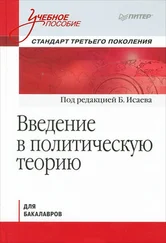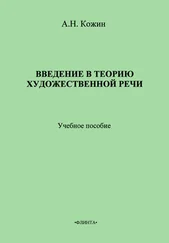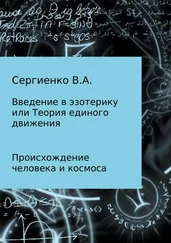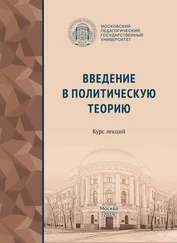DeLong, G. R. & J. T. Dwyer 1988. Correlation of family history with specific autistic subgroups: Asperger's syndrome and bipolar affective disease. Journal of Autism and Developmental Disorders 18, 593–600.
Denckla, M. B. 1983. The neuropsychology of socio-emotional learning disabilities. Archives of Neurology 40, 461-2.
Dennett, D. C. 1978. Beliefs about beliefs. Behavioral andBrain Sciences 4, 568-70.
Duncan, J. 1986. Disorganization of behaviour after frontal lobe damage. Cognitive Neuropsychology 33, 271-90.
Ehlers, S. & C. Gillberg 1993. The epidemiology of Asperger syndrome. A total population study. Journal of Child Psychology and Psychiatry 34, 1327-50.
Eisenberg, L. 1957. The fathers of autistic children. American Journal of Orthopsychiatry 27, 715-24.
Eisenmajer, R. & M. Prior 1991. Cognitive linguistic correlates of «theory of mind» ability in autistic children. British Journal of Developmental Psychology 9, 351-64.
Fein, G. G. 1981. Pretend play: an integrative review. Cognitive Development 52, 1095—118.
Field, Т. M., R. Woodson, R. Greenberg, D. Cohen 1982. Discrimination and imitation of facial expressions by neonates. Science 218, 179-81.
Fodor, J. A. 1983. Modularity of mind. Cambridge, Mass.: MIT Press.
Folstein, S. & M. Rutter 1977. Infantile autism: a genetic study of 21 twin pairs. Journal of Child Psychology and Psychiatry 18, 297–321.
Freeman, N. H., C. Lewis, M.J. Doherty 1991. Preschoolers' grasp of the desire for knowledge in false belief prediction: practical intelligence and verbal report. British Journal ofDevelopmental Psychology 9, 139-57-
Frith, C. D. 1992. The cognitive neuropsychology of schizophrenia. New Jersey: Lawrence Erlbaum.
Frith, C. D. & U. Frith 1991. Elective affinities in schizophrenia and childhood autism. In Social psychiatry: theory, methodology andpra-ctice, P. E. Bebbington (ed.), 65-8. New Brunswick, NJ: Transaction.
Frith, U. 1970a. Studies in pattern detection in normal and autistic children: I. Immediate recall of auditory sequences. Journal of Abnormal Psychology 76, 413-20.
Frith, U. 1970b. Studies in pattern detection in normal and autistic children: II. Reproduction and production of color sequences. Journal of Experimental Child Psychology 10, 120-35.
Frith, U. 1972. Cognitive mechanisms in autism: Experiments with color and tone sequence production. Journal of Autism and Childhood Schizophrenia2, 160-73.
Frith, U. 1989a. Autism: explaining the enigma. Oxford: Basil Blackwell.
Frith, U. 1989b.Anew lookat language and communication in autism. British Journal of Disorders of Communication 24, 123-50.
Frith, U. 1991a. Autism and Asperger syndrome. Cambridge: Cambridge University Press.
Frith, U. 1991b. Translation and annotation of «autistic psycho-pathy» in childhood, by H. Asperger. See Frith (1991a), 37–92.
Frith, U. 1992. Cognitive development and cognitive deficit. The Psychologists, 13–19.
Frith, U. & B. Hermelin 1969. The role of visual and motor cues for normal, subnormal and autistic children. Journal of Child Psychology and Psychiatry 10, 153-63.
Frith, U. & M. Snowling 1983. Reading for meaning and reading for sound in autistic and dyslexic children. Journal of Developmental Psychology 1, 329-42.
Frith, U., J. Morton, A. M. Leslie 1991. The cognitive basis of a biological disorder: autism. Trends in Neuro science 14, 433-8.
Frith, U., F. Happe, F. Siddons 1994. Autism and theory of mind in everyday life. Social Development, 3, 108–124.
Ghaziuddin, M., L. Y. Tsai, N. Ghaziuddin 1992a. Brief report: a comparison of the diagnostic criteria for Asperger syndrome. Journal of Autism and Developmental Disorders 22, 643—9.
Ghaziuddin, M., L. Y. Tsai, N. Ghaziuddin 1992b. Brief report: a reappraisal of clumsiness as a diagnostic feature of Asperger syndrome. Journal of Autism and Developmental Disorders 22, 651-6.
Gillberg, C. 1986. Brief report: Onset at age 14 of a typical autistic syndrome. A case report of a girl with herpes simplex encephalitis. Journal of Autism and Developmental Disorders 16, 369-75.
Gillberg, C. 1989. Asperger's syndrome in 23 Swedish children. Developmental Medicine and Child Neurology 31, 520-31.
Gillberg, C. 1991. Clinical and neurobiological aspects of Asperger syndrome in six family studies. See Frith (1991a), 122-46.
Gillberg, C. 1992. TheEmanuel Miller Memorial Lecture lggKAutism and autistic-like conditions: subclasses among disorders of empathy. Journal of Child Psychology and Psychiatry 33, 813-42.
Gillberg, С. & M. Coleman (eds) 1992. The biology of the autistic syndromes—2ndedn. London: MacKeith.
Gillberg, С. & C. Forsell 1984. Childhood psychosis and neuro fibromatosis – more than a coincidence. Journal of Autism and Developmental Disorders 14, 1–9.
Gillberg, С. & Н. Schaumann 1982. Social class and infantile autism. Journal of Autism and Developmental Disorders 12, 223-8.
Gillberg, G., E. Persson, M. Grufman, U. Themner 1986. Psychiatric disorders in mildly and severely mentally retarded urban children and adolescents: epidemiological aspects. British Journal of Psychiatry 149, 68–74.
Gillberg, C., S. Steffenburg, G. Jakobsson 1987. Neurobiological findings in 20 relatively gifted children with Kanner-type autism or Asperger's syndrome. Developmental Medicine and Child Neurology 29, 641-9.
Gillberg, I. G. 1991. Autistic syndrome with onset at age 31 years: herpes encephalitis as a possible model for childhood autism. Developmental Medicine and Child Neurology 33, 912-29.
Goodenough, D. R., F. Grandini, I. Olkin, D. Pizzamiglio, D. Thayer, H. A. Witkin 1977. A study of X chromosome linkage with field dependence and spatial visualisation. Behaviour Genetics 7, 373-87.
Goodman, R. 1989. Infantile autism: a syndrome of multiple primary deficits? Journal of Autism and Developmental Disorders 19, 409-24.
Goodman, R. 1990. Technical note: are perinatal complications causes or consequences of autism? Journal of Child Psychology and Psychiatry 31, 809-12.
Gopnik, A. & J. Astington 1988. Children's understanding of representational change and its relation to the understanding of false belief and the appearance/reality distinction. Child Development 59, 26–37.
Gottschaldt, K. 1926. Ucber den Einfluss der Erfahrung auf die Welt der Wahrnehmung von Figuren. Psychologlsche ForschungS, 261–317.
Grandin, T. 1984. My experiences as an autistic child and review of selected literature. Journal of Orthomolecular Psychiatry 13, 144-75.
Grandin, T. & M.Scariano 1986. Emergence labelled autistic. Tunbridge Wells: Costello.
Green, W. H., M. Campbell, A. S. Hardesty, D. M. Grega, M. Padron-Gayor, J. Shell, L. Erlenmeyer-Kimling 1984. A comparison of schizophrenic and autistic children. Journal of the American Academy of Child and Adolescent Psychiatry, 23, 399–409.
Happe, F. G. E. 1991a. the autobiographical writings of three asperger syndrome adults: problems of interpretation and implications for theory. See Frith (1991a), 207-42.
Happe, f. G. E. 1991b. Theory of mind and communication in autism. PhD thesis, University of London.
Happe, F. G. E. 1993. Communicative competence and theory of mind in autism: a test of Relevance theory. Cognition 48, 101-19.
Happe, F. G. E. 1994a. An advanced test of theory of mind: understanding of story characters' thoughts and feelings by able autistic, mentally handicapped and normal children and adults. Journal of Autism and Developmental Disorders 24, 129-54.
Читать дальше
Конец ознакомительного отрывка
Купить книгу












